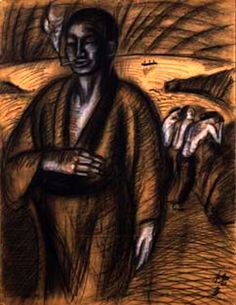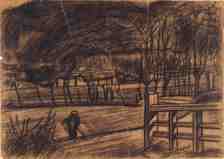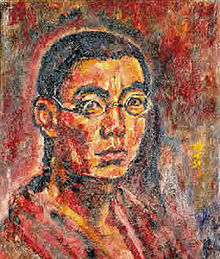Kaita Murayama and Japanese Art: A flower cut down before blooming
Lee Jay Walker
Modern Tokyo Times
The Japanese artist and writer Kaita Murayama faded from this earth at the young age of 22. In this sense, the “real Kaita” will never be known because of the limited work he produced based on his short life. Therefore, it is obvious that a certain melancholy exists tinged with passion and romanticism when thinking about Kaita.
He was born in 1896 during the modernization processes of the Meiji Restoration that began in 1868 and died during the more liberal period of Taisho in early 1919. It could well be that the appeal of Edgar Allan Poe to Kaita intensified during his illness. After all, tuberculosis and pneumonia – and other ailments related to both – would end a very promising artist and writer when he was only 22.
Despite Kaita being born in Yokohama, he moved to the environment of Kyoto City. Yet the natural traditions related to Kyoto was equally seeing new thought patterns that emerged during both the Meiji and Taisho periods of Japanese history. Indeed, the overflows of Buddhism in Kyoto, the significance of high culture, and other rich traditions may have equally equipped Kaita to reach new independent barriers.
Obviously, poetry flowed from his intriguing mind and he did not fear to express the inner thoughts that aroused him sexually. At the same time, his illness was ravaging away at his body and he knew that his life was fragile. Therefore, in such a perilous situation – despite espousing clear artistic tendencies before the real onset of illness – one can only imagine how fear, intrigue, freedom, and other emotions impacted on Kaita during the last stages of his life.
Indeed, in one self-portrait that is believed to be Kaita’s last oil painting in this field, it is noticeable that sunlight is fused with blood red. Hence, Kaita fully understood that death was nearing and having tuberculosis then “blood red” was clearly appropriate. Sadly, the ravages of ill health “cut this flower down before blooming.” However, his strong eyes – despite the clock ticking in his last oil self-portrait – denotes “strength” and a sense of self-identity that equally flowed in his poetry.
Modern Tokyo News is part of the Modern Tokyo Times group
DONATIONS to SUPPORT MODERN TOKYO TIMES – please pay PayPal and DONATE to sawakoart@gmail.com
http://moderntokyotimes.com Modern Tokyo Times – International News and Japan News
http://sawandjay.com Modern Tokyo Times – Fashion
https://moderntokyonews.com Modern Tokyo News – Tokyo News and International News
http://global-security-news.com Global Security News – Geopolitics and Terrorism
PLEASE JOIN ON TWITTER
https://twitter.com/MTT_News Modern Tokyo Times
PLEASE JOIN ON FACEBOOK





